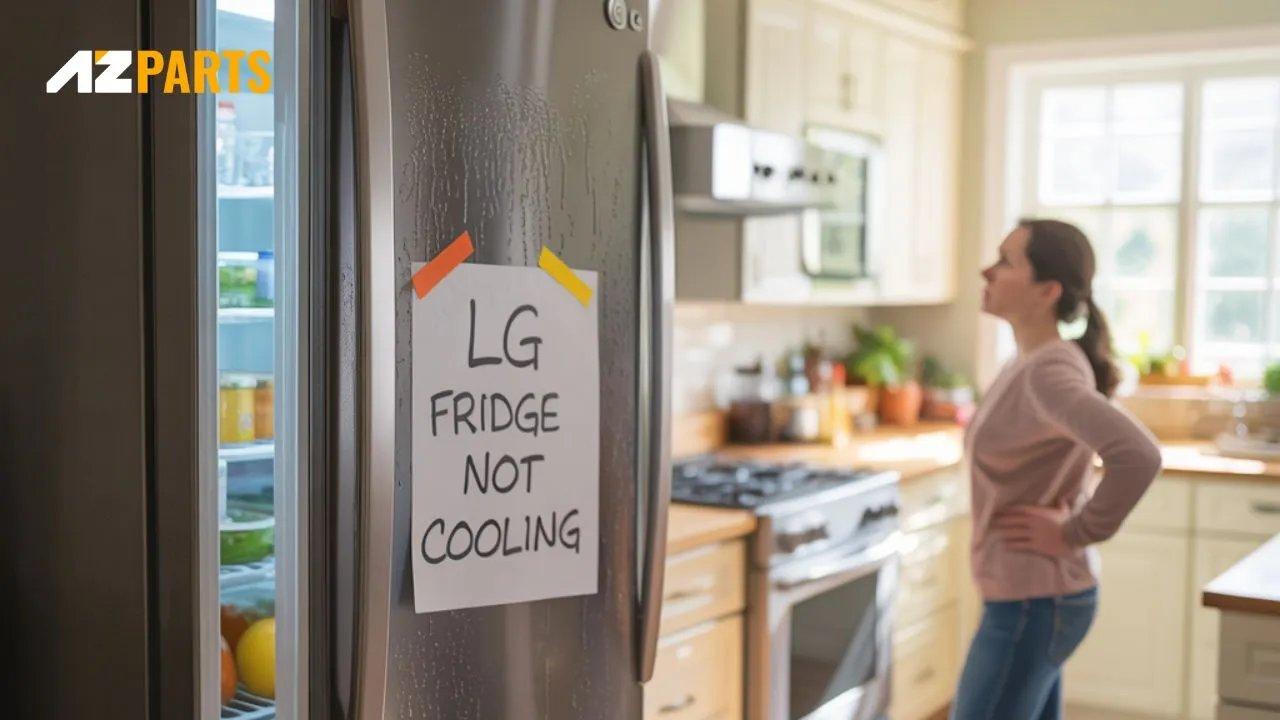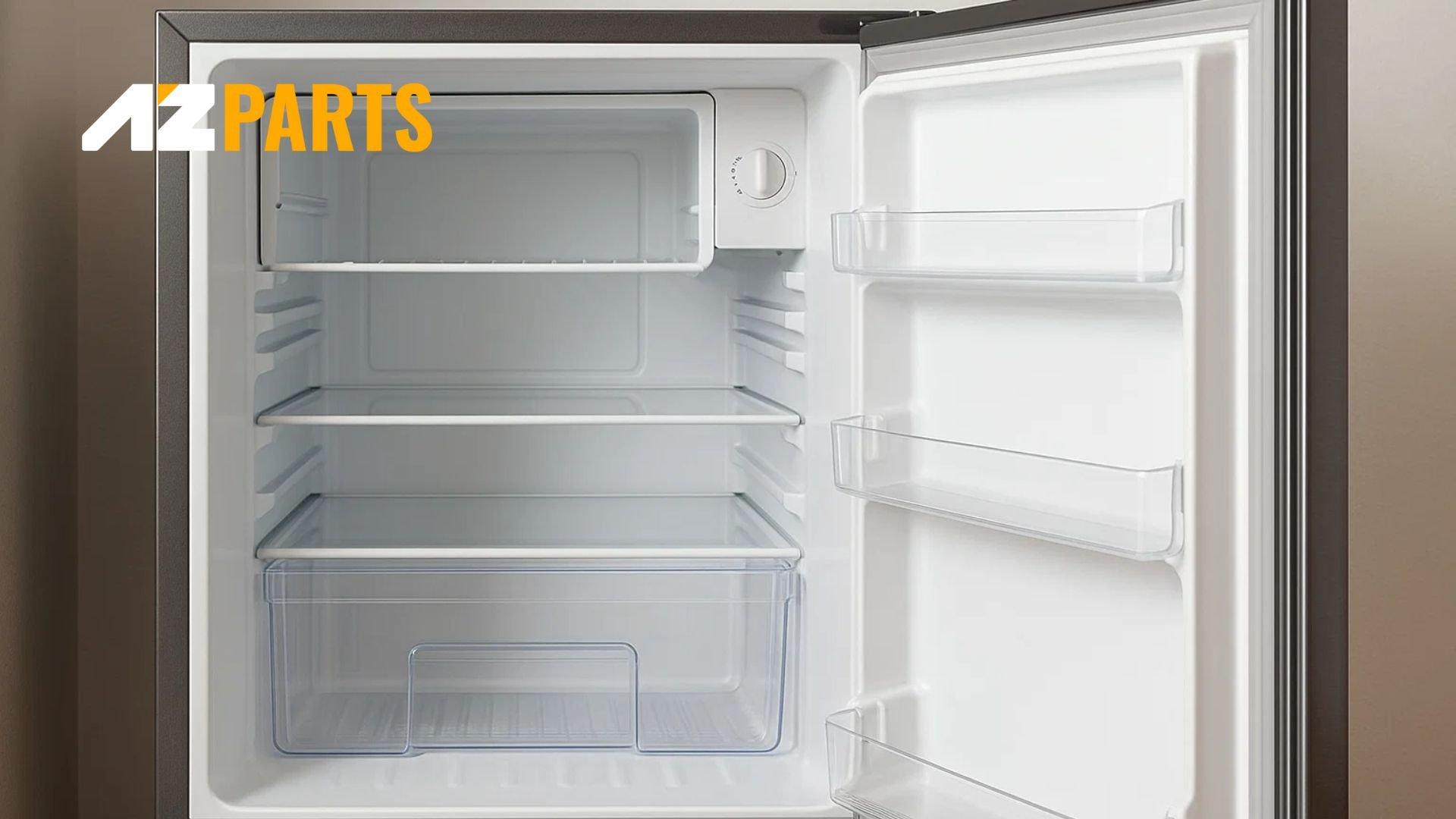Repair help
Refrigerator Maintenance Guide: Extend Lifespan & Efficiency
AZparts Team
Updated on July 31, 2025
9 min read
Keeping your refrigerator in top condition isn’t just about cleanliness, it’s about performance, energy savings, and long-term durability. With proper refrigerator maintenance, you can prevent unexpected breakdowns, reduce electricity costs, and ensure your fridge keeps your food fresh every day. In this guide, AZParts will show you how to perform the essential refrigerator maintenance steps that every homeowner should follow to get the most out of their appliances.
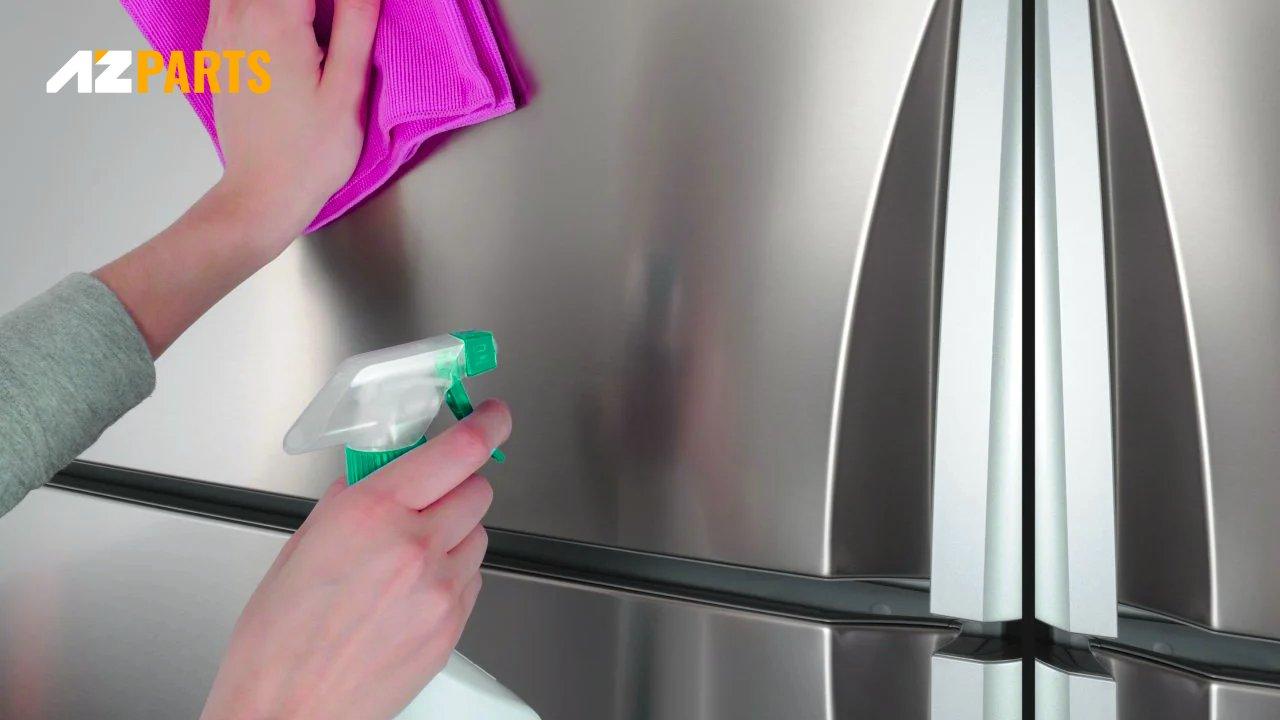
1. Why Refrigerator Maintenance Matters
With regular care, your fridge can operate more efficiently, last longer, and help you save on repair costs. Below are some key reasons why refrigerator maintenance should be a part of your routine.
- Extend the Lifespan of Your Refrigerator: Every refrigerator experiences wear and tear as time passes. However, regular maintenance can help reduce the stress on its components. By performing simple tasks like cleaning, checking for unusual noises, and ensuring proper airflow, you can prevent major breakdowns and help your appliance serve you well for many years.
- Prevent Expensive Repairs: Routine maintenance allows you to catch minor issues early before they turn into serious and costly problems. For example, cleaning the condenser coils, inspecting the door seals, or ensuring proper defrosting can prevent problems such as weak cooling, frost buildup, or water leaks. These small actions can save you both time and money in the long run.
- Keep Refrigerator Running Efficiently: When a refrigerator is well-maintained, it does not have to work as hard to keep food cold. This leads to better energy efficiency and more consistent performance. A clean and properly functioning fridge helps you avoid food spoilage and reduces electricity bills.
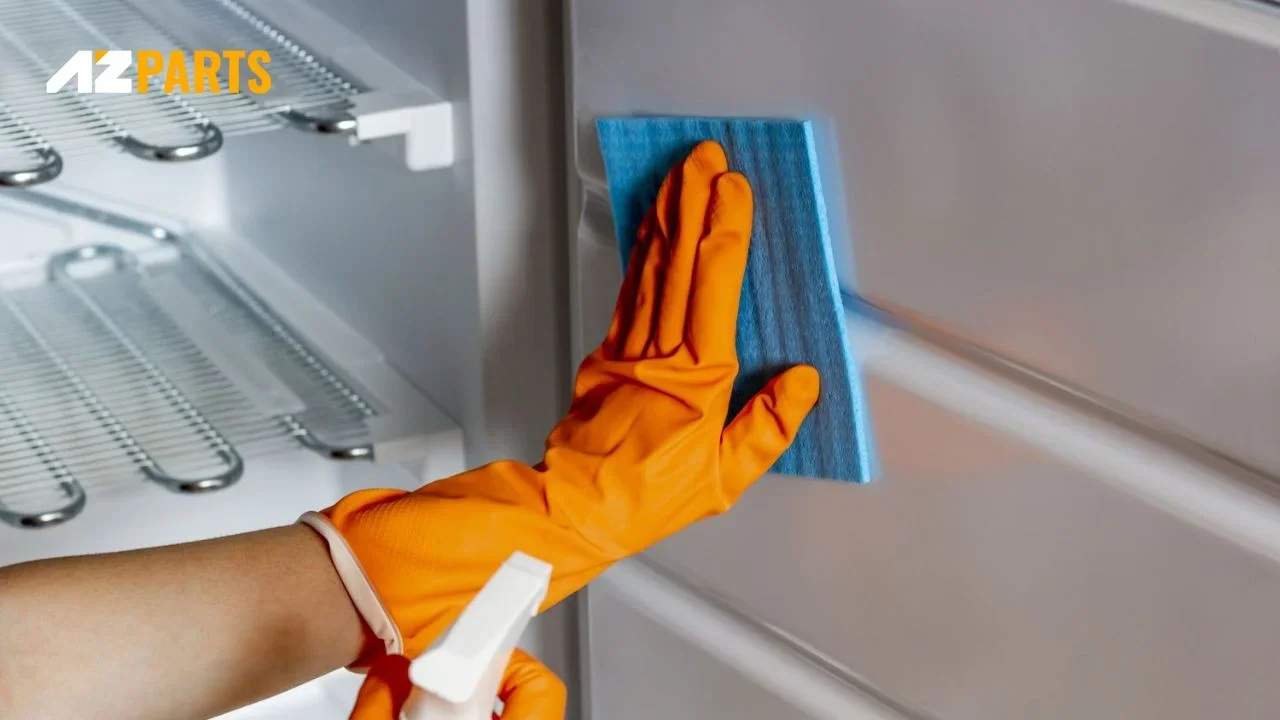
Maintaining your refrigerator is essential for keeping it in good working condition and avoiding unexpected issues (Source: AZParts)
By taking the time to care for your refrigerator, you are making a smart investment in its performance and durability. Regular maintenance, whether done by you or a professional, helps ensure that your appliance remains dependable for years to come.
2. Refrigerator Maintenance Tips & Routine Care
Maintaining your refrigerator does not have to be difficult. If you follow a few simple maintenance steps regularly, you can help your refrigerator work efficiently and extend its lifespan. The guide below outlines basic care tasks that most homeowners can complete easily at home.
2.1. Wipe spills and clean interior weekly
You should clean the inside of your refrigerator at least once a week to prevent stains, odors, and bacteria buildup.
- Begin by unplugging the appliance and removing all food items. Make sure to throw away anything that is expired or spoiled.
- Remove the shelves, drawers, and trays, and wash them with warm, soapy water.
- Use a mixture of baking soda and water to wipe down the interior walls and eliminate odors.
- After drying every part thoroughly, you can reassemble the pieces and place the food back inside.
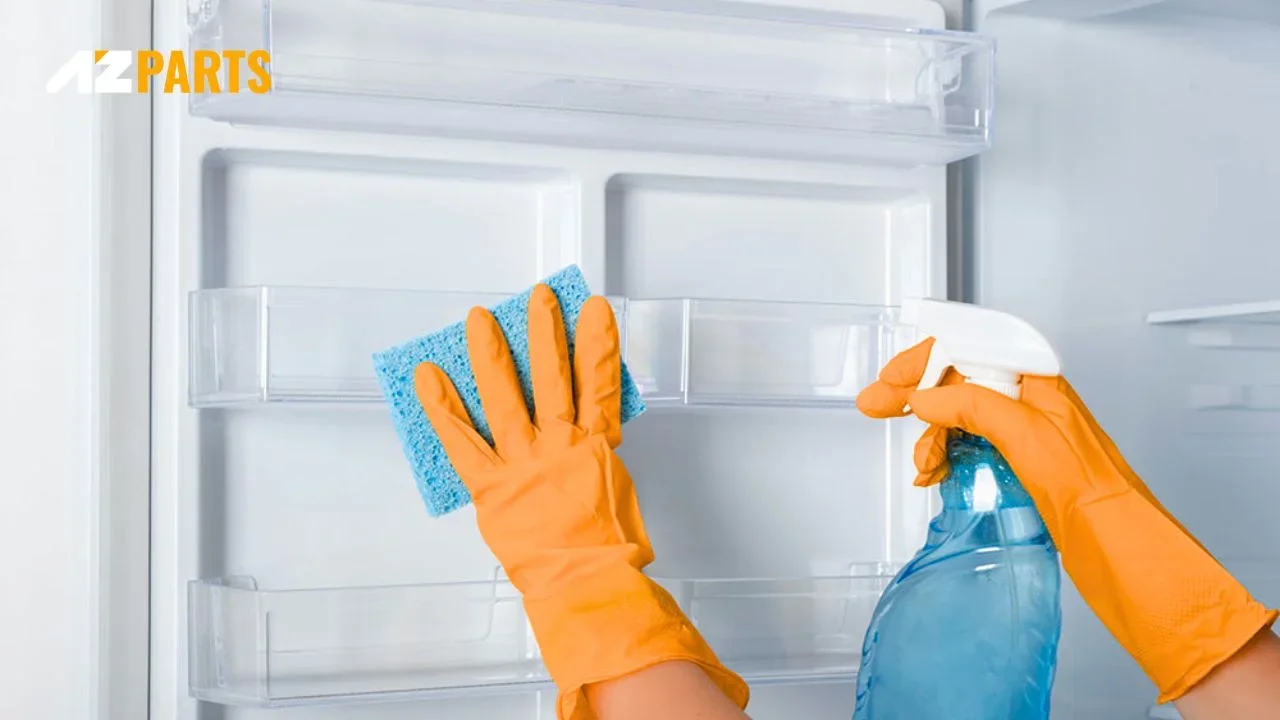
Remove the shelves, drawers, and trays, and wash them with warm, soapy water (Source: AZParts)
2.2. Keep vents clear and avoid overpacking
Air vents inside the refrigerator allow cool air to circulate evenly. If these vents are blocked by food items or containers, the airflow will be disrupted, and some areas may become warmer than others. You should always make sure that the vents remain clear. Avoid overpacking the fridge to ensure air can move freely between items.
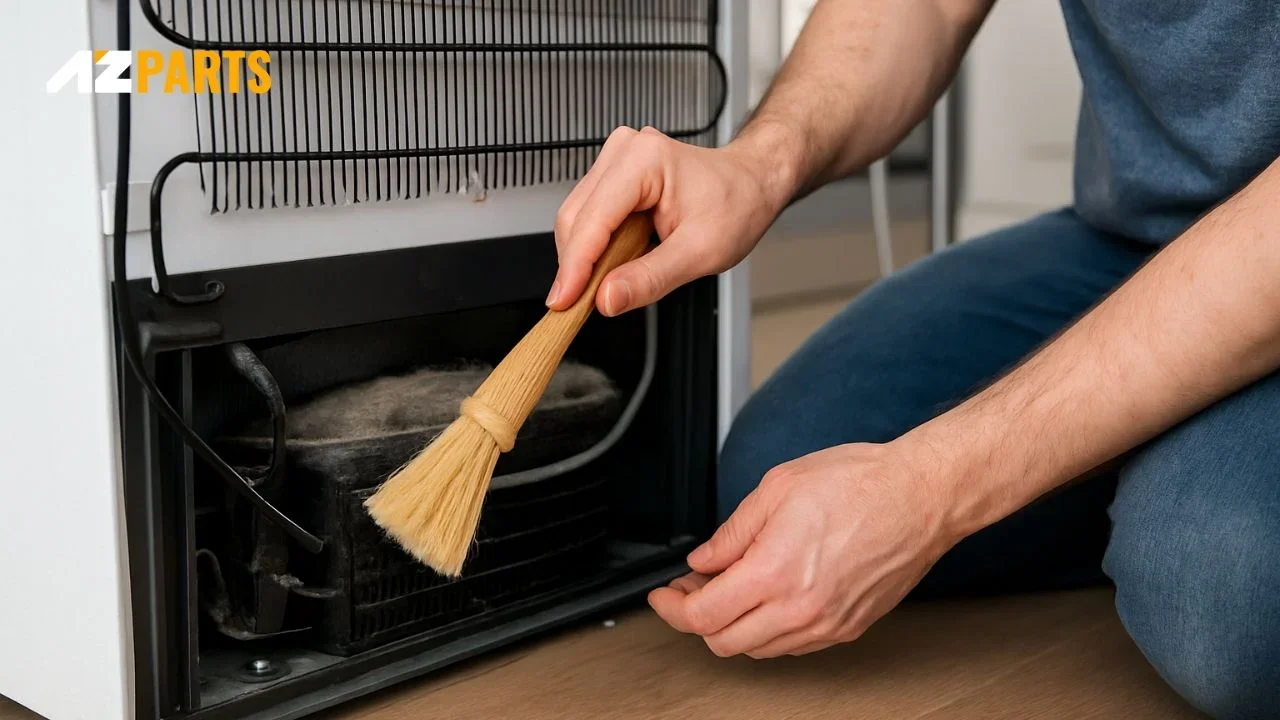
You should always make sure that the vents remain clear (Source: AZParts)
2.3. Inspect and clean door gaskets
The door gaskets create a seal that keeps cold air inside the refrigerator. If these rubber seals become dirty or worn, the appliance may lose cold air, which forces it to work harder. In addition, applying a thin layer of petroleum jelly can help keep the gaskets soft and flexible.
You should inspect the gaskets regularly and clean them using a mild detergent and warm water. If you see any cracks, tears, or loose areas, you should replace the gaskets.
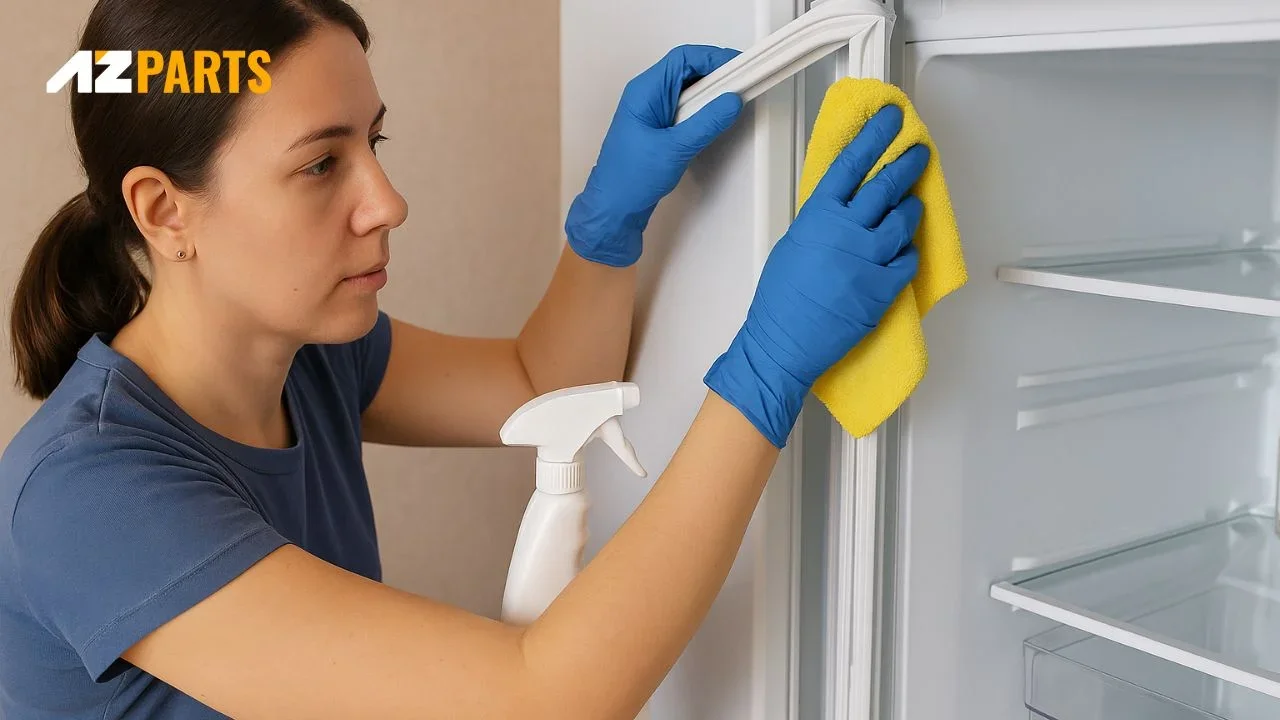
If you see any cracks, tears, or loose areas, you should replace the gaskets (Source: AZParts)
2.4. Defrost the freezer when ice builds up
If your freezer does not have an automatic defrost function, you need to defrost it manually whenever you see excess ice. Ice buildup can block airflow and lower efficiency.
To defrost it, turn off the refrigerator, remove all frozen items, and let the ice melt completely. Once the interior is dry, you can restart the unit and place the frozen items back inside.
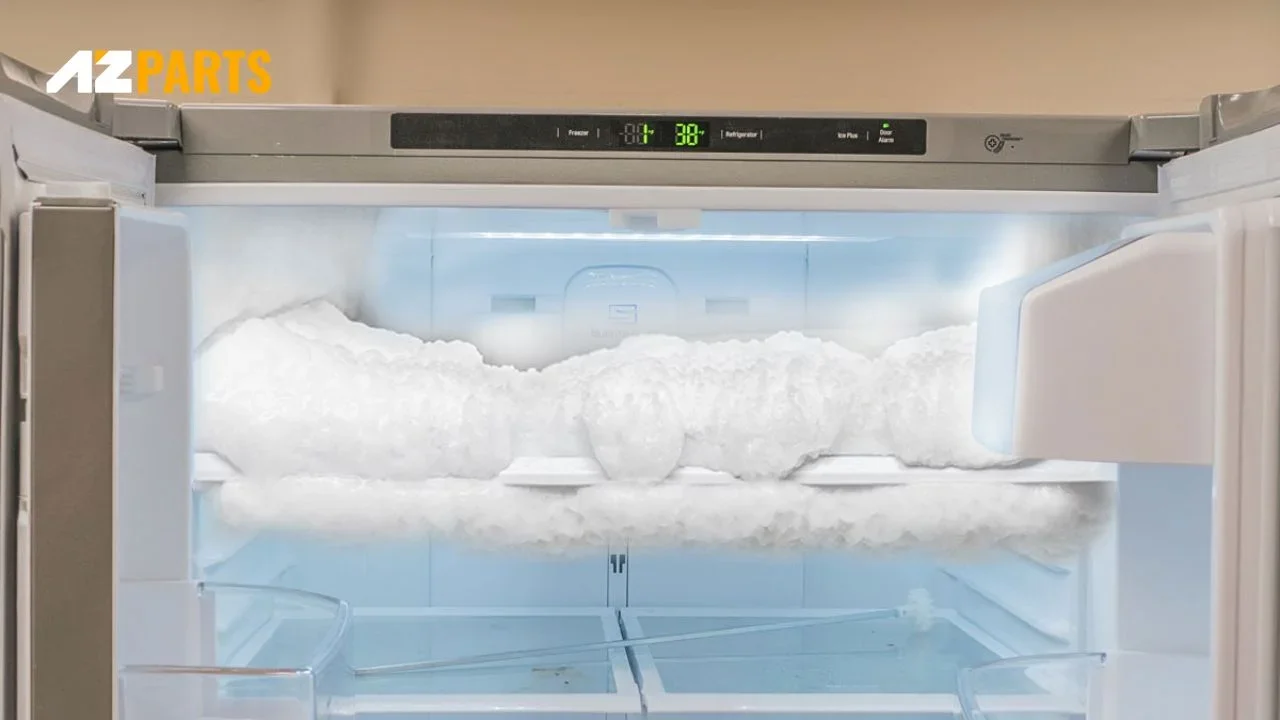
To defrost the ice buildup, turn off the refrigerator, remove all frozen items, and let the ice melt completely (Source: AZParts)
2.5. Vacuum condenser coils once or twice a year
Condenser coils are usually located at the back or underneath the refrigerator. These coils can collect dust and dirt, which can make the compressor work harder and reduce efficiency.
Solution: You should unplug the refrigerator before accessing the coils. After removing the panel, use a coil brush or vacuum cleaner to remove any debris. Performing this cleaning once or twice a year will help maintain proper cooling performance.
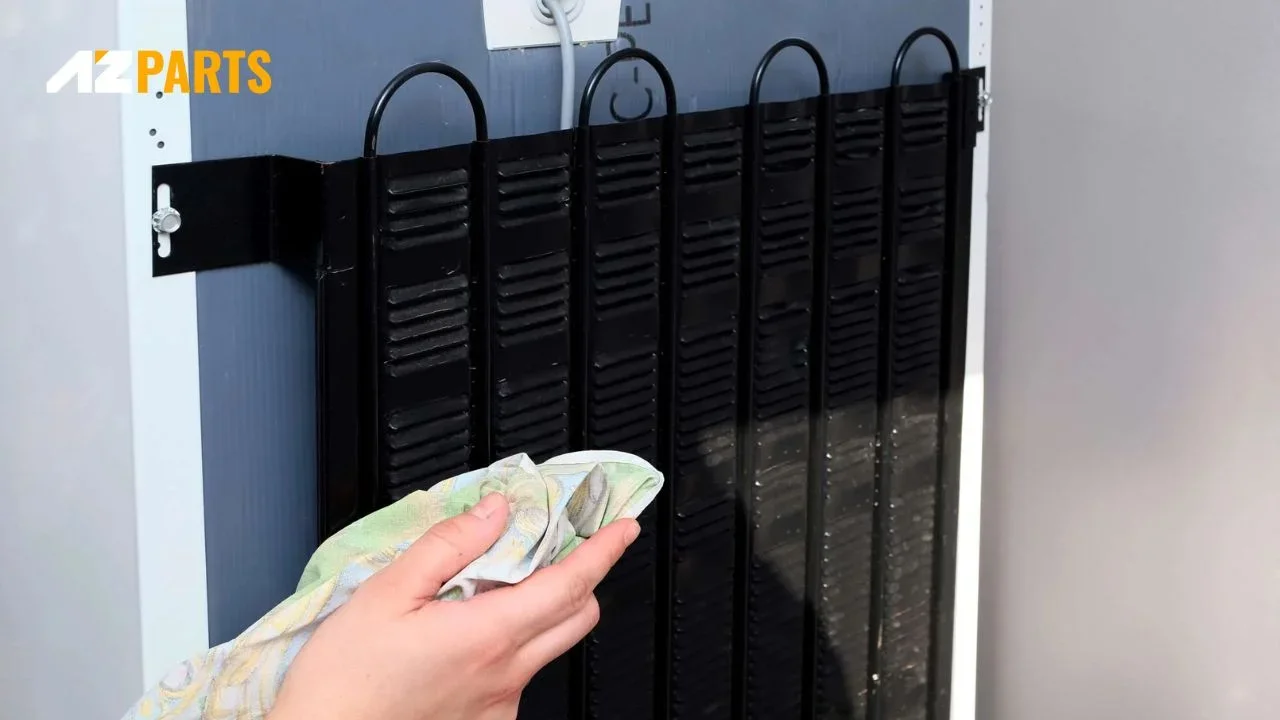
You should use a coil brush or vacuum cleaner to remove any debris (Source: AZParts)
2.6. Check and maintain proper temperature settings
To keep food fresh, your refrigerator should be set between 35°F - 38°F, and your freezer should be set between 0°F - 5°F. If your appliance does not have a digital display, you can use a thermometer to check the temperature. Be sure that food items are not blocking the vents inside, as this can prevent even cooling.
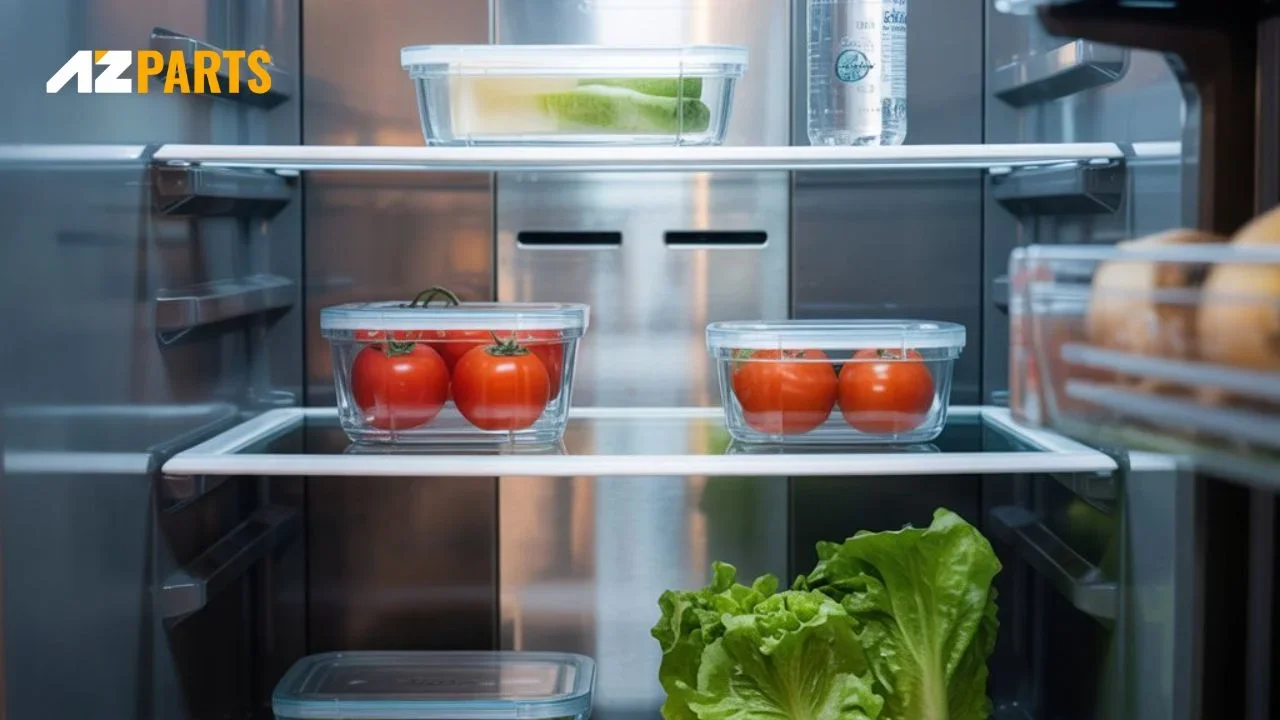
You should set between 35°F and 38°F for the refrigerator, between 0°F and 5°F for the freezer (Source: AZParts)
2.7. Keep the refrigerator level
A refrigerator that is not level may cause the doors to close improperly. This can affect the temperature and lead to condensation. You should use a spirit level to check the balance from side to side and front to back. If the refrigerator is not level, you can adjust the levelling feet at the bottom until it is stable.
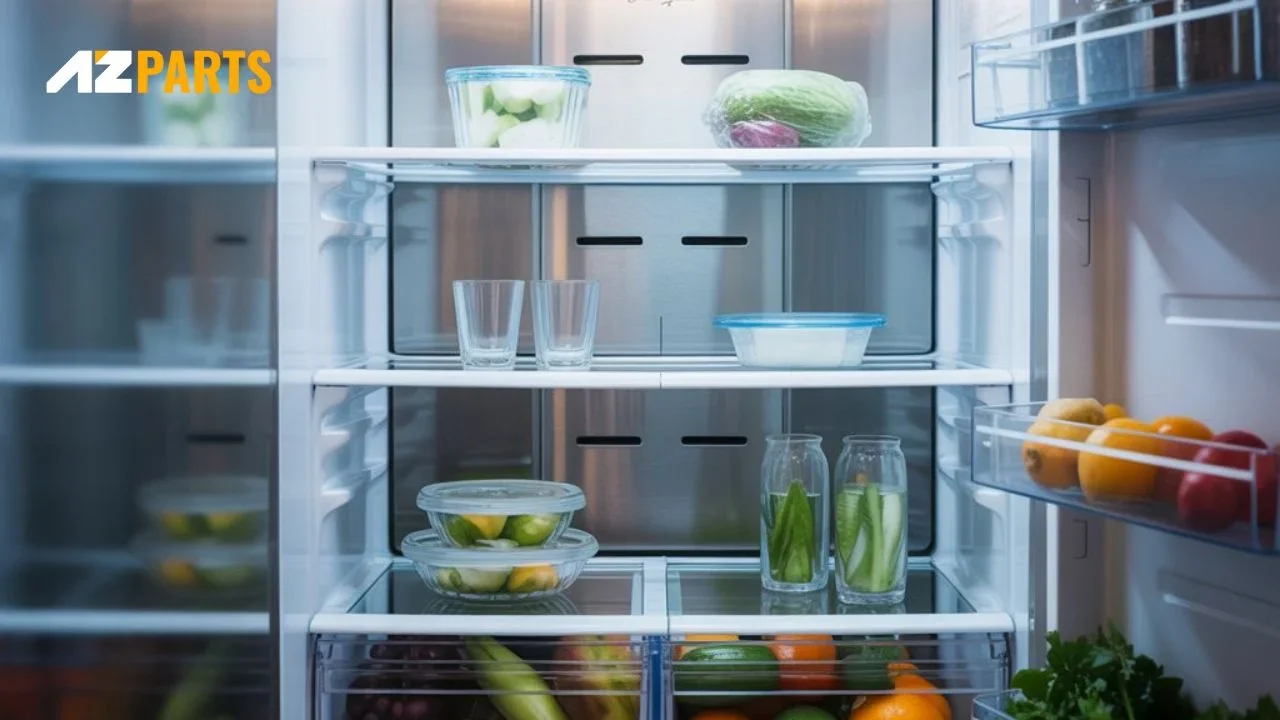
A level refrigerator ensures that the doors seal tightly (Source: AZParts)
2.8. Clean the drip pan under the fridge
Many refrigerators include a drip pan that collects condensation from the cooling system. If this pan is not cleaned, it may develop mold or odors. You should unplug the fridge and carefully remove the drip pan. After emptying any water inside, clean it with warm, soapy water, rinse it thoroughly, and let it dry completely before putting it back in place.

If this pan is not cleaned, it may develop mold or odors (Source: AZParts)
2.9. Replace water filter every 6 months (if applicable)
If your refrigerator has a built-in water or ice dispenser, it likely includes a water filter. You should replace the filter approximately every six months to maintain clean water and prevent blockages. Check your user manual to find the correct filter model and follow the steps for installation. After installing a new filter, run about one gallon of water through the dispenser to flush out any air and impurities.
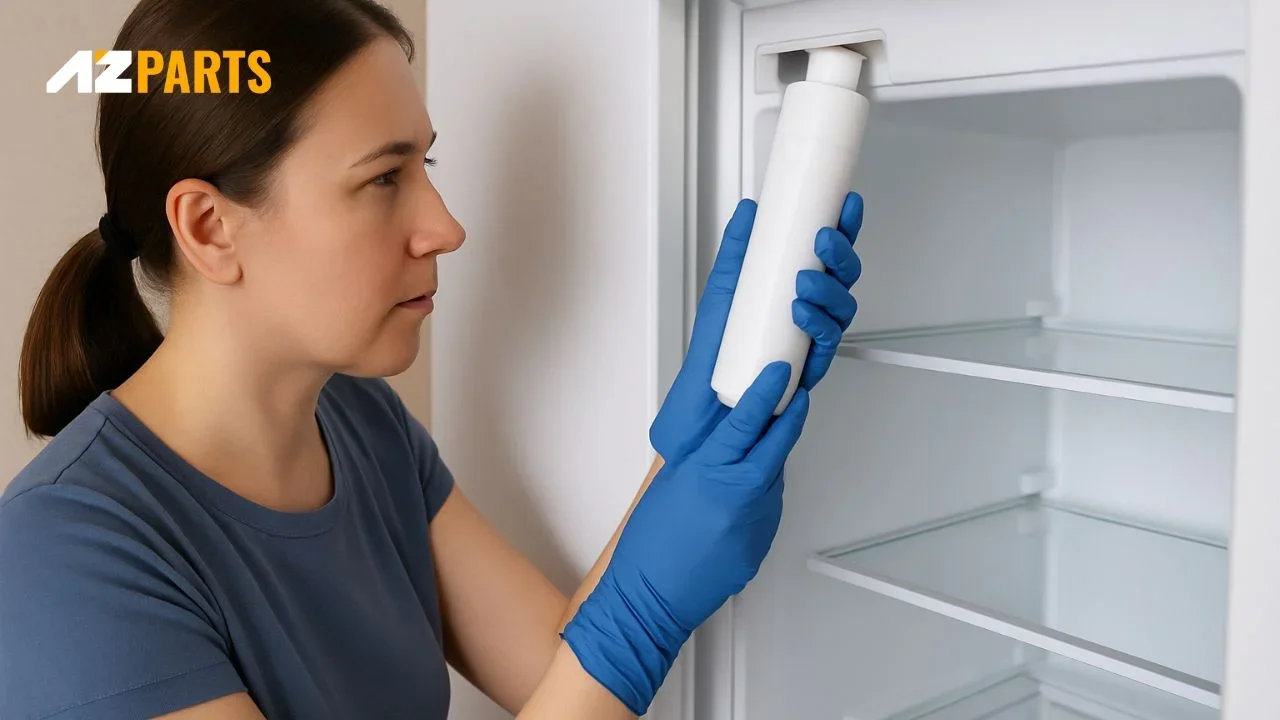
You should replace the filter approximately every six months (Source: AZParts)
3. Warning Signs To Look Out For
Identifying early warning signs of refrigerator problems is essential to prevent costly repairs or the need for a full replacement. Paying attention to the following signs can help you take timely action and keep your refrigerator running efficiently.
3.1. Overheating Motor
If you notice that the back of your refrigerator feels unusually hot, it could be a sign of an overheating motor. This issue often points to a failing start relay or capacitor. Replacing these parts with high-quality options like the AZParts refrigerator start relay or refrigerator capacitor can help restore normal motor function and prevent further damage.
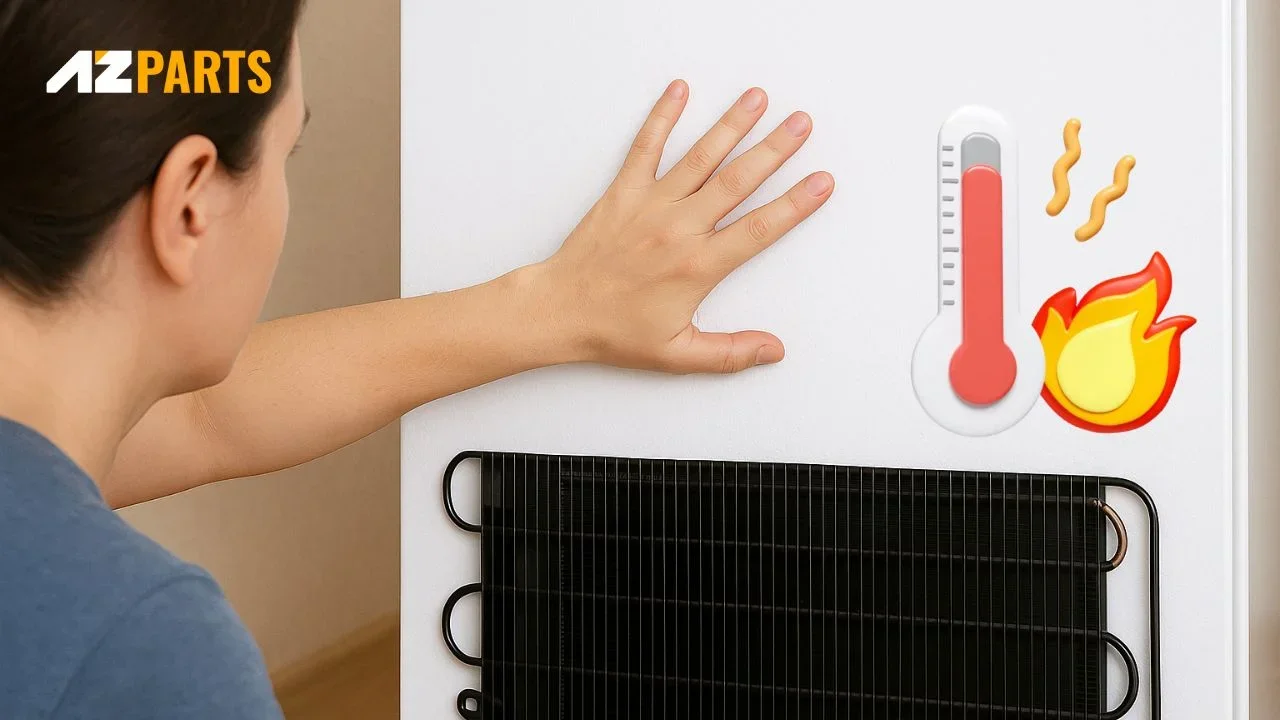
If you notice that the back of your refrigerator feels unusually hot, it could be a sign of an overheating motor (Source: AZParts)
3.2. Strange Noises
Unusual sounds such as buzzing, rattling, or humming coming from the refrigerator may indicate a problem with internal components like the compressor or fan motor. These sounds should not be ignored, as they often signal that a part may need servicing or replacement. In some cases, a faulty start relay or other electrical component may be to blame.

Unusual sounds such as buzzing, rattling, or humming may indicate a problem with internal components (Source: AZParts)
3.3. Excessive Condensation
If you see too much condensation on the walls or shelves of your refrigerator, or if frost is building up in the freezer, there could be a problem with the defrost system. A broken defrost heater or thermostat may be the cause. Replacing them with parts such as the refrigerator defrost heater or refrigerator thermostat can help maintain proper moisture control and cooling efficiency.
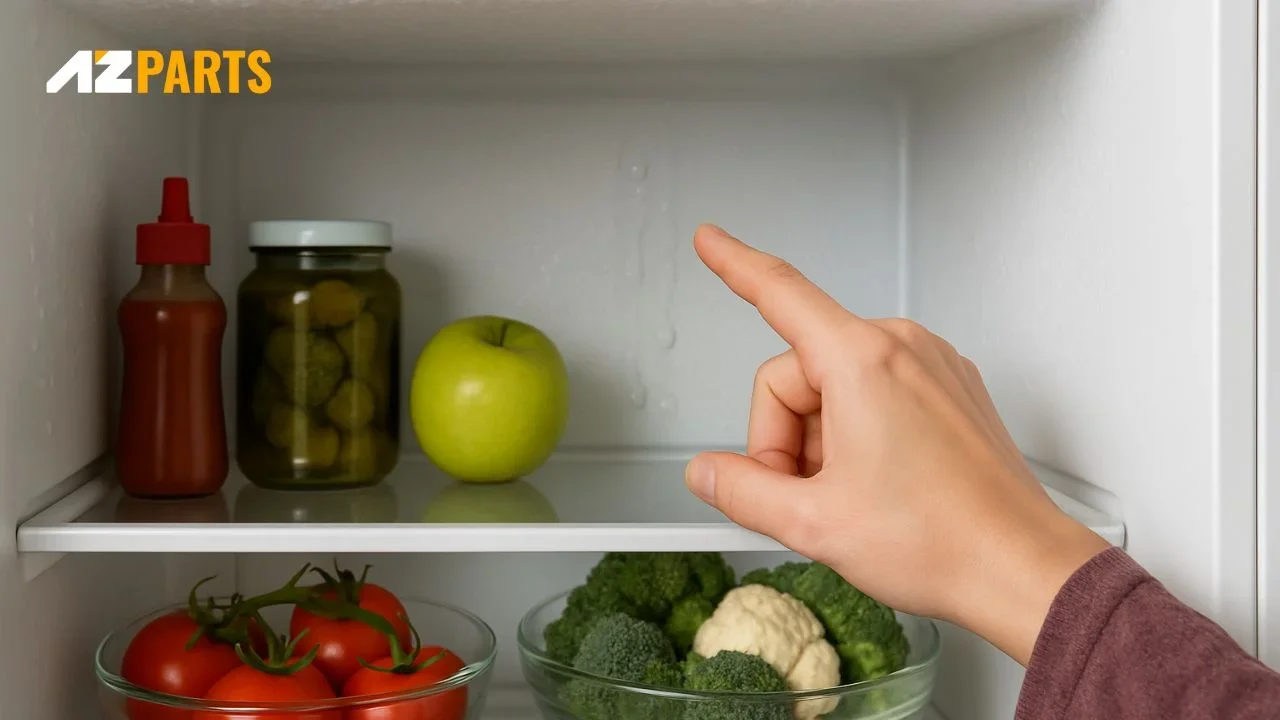
If you see too much condensation on the walls, there could be a problem with the defrost system (Source: AZParts)
3.4. Fridge Not Cooling Evenly
When your refrigerator does not cool evenly, you may find some areas too warm while others are too cold. This uneven cooling often results from a faulty thermostat or airflow issues. Installing a reliable AZParts thermostat can help regulate temperature more accurately. If the fridge has a water dispenser or ice maker and you also notice water leaks, checking and replacing the refrigerator water inlet valve may be necessary.

When your refrigerator does not cool evenly, you may find some areas too warm while others are too cold (Source: AZParts)
Refrigerator maintenance doesn’t have to be complicated. By following these simple steps, you’ll save money and avoid costly repairs down the line. And when it’s time to replace the refrigerator parts, trust AZParts for high-quality, compatible solutions that help your fridge perform like new. Start taking better care of your refrigerator today with help from AZParts.
Explore more about how to maintain and fix other refrigerator parts:
Contact Info
Address: 8 The Green, Ste A, Dover, Delaware 19901-3618, United States
Email: support@azparts.com
Refrigerator
- 1. Why Refrigerator Maintenance Matters
- 2. Refrigerator Maintenance Tips & Routine Care
- 2.1. Wipe spills and clean interior weekly
- 2.2. Keep vents clear and avoid overpacking
- 2.3. Inspect and clean door gaskets
- 2.4. Defrost the freezer when ice builds up
- 2.5. Vacuum condenser coils once or twice a year
- 2.6. Check and maintain proper temperature settings
- 2.7. Keep the refrigerator level
- 2.8. Clean the drip pan under the fridge
- 2.9. Replace water filter every 6 months (if applicable)
- 3. Warning Signs To Look Out For
Further Reading
Further Reading

